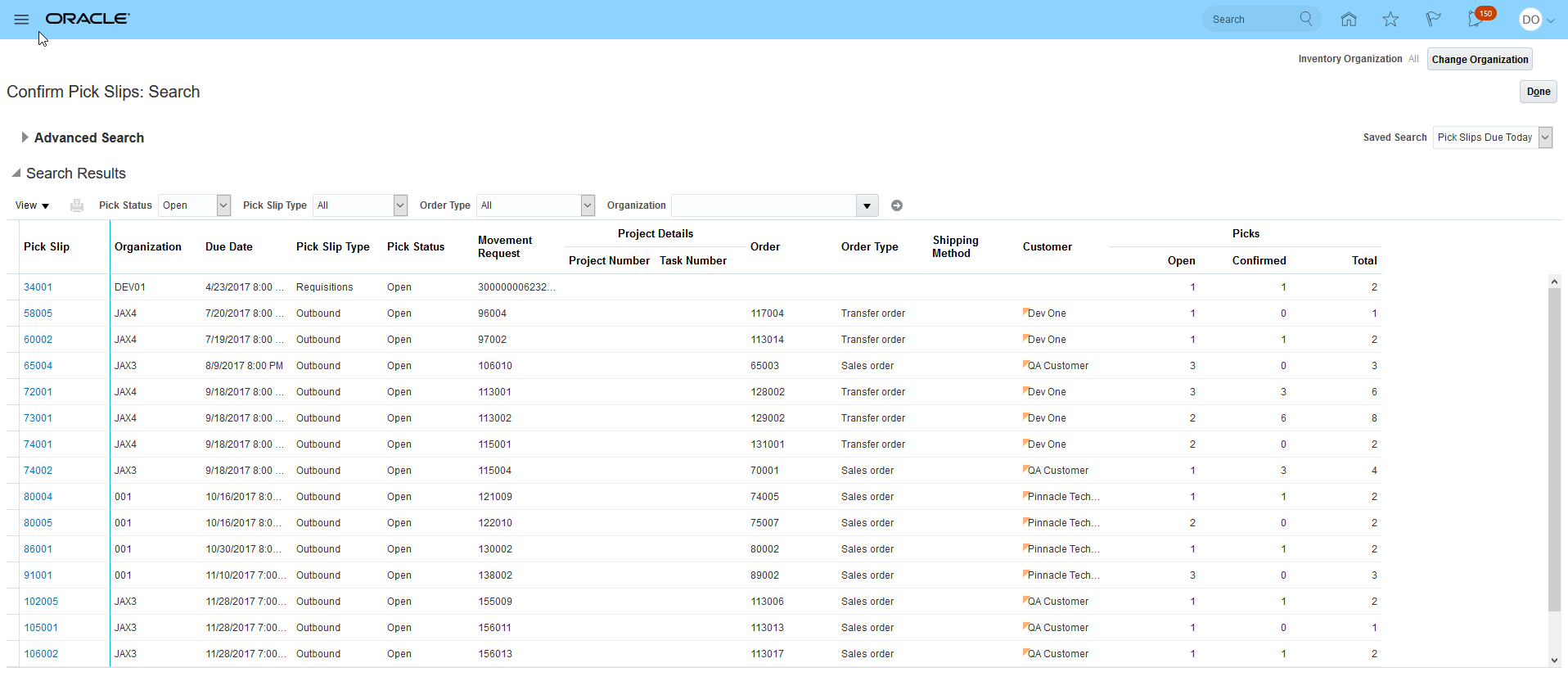
In our previous post, we discussed the various counting options that RF-SMART can offer Oracle Cloud users, such as Cycle Counting and Physical Inventory Counting. Today, we are switching our focus to Picking, and we’ll be exploring Pick Slip Picking and Directed Pick Slip Picking.
We will cover the main differences between these two workflows. We'll look at how these functions work in Oracle and how they work in RF-SMART, including workflow options of interest when using them.

Before you can start using the picking functions covered here, you will need to configure certain elements in Oracle:
Pick Slip Grouping Rules
Picking Rules
Pick Wave Release Rules
And finally, before you can start picking, you need to run the Pick Wave. This can be run manually or scheduled depending on the frequency of your picking. The Pick Wave process will generate the Pick Slips utilizing the configuration specified above, ready to be picked.

Figure 1: Oracle - Confirm Pick Slips
While thinking of ways to improve our solution, our team identified an opportunity to give Oracle Cloud users more options for how their picks were performed, such as the ability to consolidate their picks, the ability to sort, and so on.
When performing these functions in RF-SMART, users will be physically scanning the data (Item, Locator, Subinventory) during the pick itself. This has been proven to increase the accuracy of the picking process.
Pick Slip Picking
Directed Pick Slip Picking
Both functions are fully configurable to meet the needs of the user and business. For instance, screens can be defaulted and hidden as required.
Figure 2: Pick Slip Picking (Mobile)
Now that you understand how picking in Oracle and RF-SMART works, here are some tips for configuring these mobile functions to meet the needs of your business’s processes.
As with all RF-SMART functions, we always recommend labeling as much of the warehouse as possible. Giving the users the ability to scan barcodes rather than rely on manual input really does make the user’s task much easier, and it also helps to increase the accuracy of the functions.
There are various workflow options available for Pick Slip Picking, but here are some of the highlights:
PickSlipLockingType
SortBySubLocItem
LabelPrintUponPickSlipCompletionOnly
Sort By DestSub DestLoc SourceSub
There are various workflow options available for Directed Pick Slip Picking, here are some of the highlights:
Skip Repeated Sub Loc Collection - When enabled, the CollectSubinventory and CollectLocator screens will be skipped if the expected values are the same as the last pick.
Pick Sequence Override - Override the default picking sequence: +PickingOrder, +Subinventory, +Locator, +ItemNumber, +PickSlip, +Line.
Consolidate Quantity - When enabled, the function will consolidate quantities of the same item number/lot/serial combination across selected PickSlips.
Email Notification List Of Values - List of email addresses to be notified are separated by semicolons.
Email Notification Subject - Email subject line for notification emails can be set to include Order, PickSlip or Shipment numbers by using $Order, $PickSlip or $Shipment.
Want to See More?
The Nerds' Eye View blog is written by members of our RF-SMART Oracle Cloud development team. This series features behind the scenes insights into why we've developed different functionality and how you can best leverage it.
Read Part 1 on Physical Inventory Counts
About Scott Sellers: Developer of the Physical Inventory function. Working at RF-SMART for 3 years, joined the Oracle Cloud technical team in June 2019.
About Rachel Warren: Architect/Designer of the Physical Inventory function. Working at RF-SMART for 2 years. Previously worked with Oracle EBS, then switched to work with Oracle Cloud in 2017
Get a monthly recap of our latest Educational Content.
© 2025 RF-SMART. All rights reserved. Privacy Policy